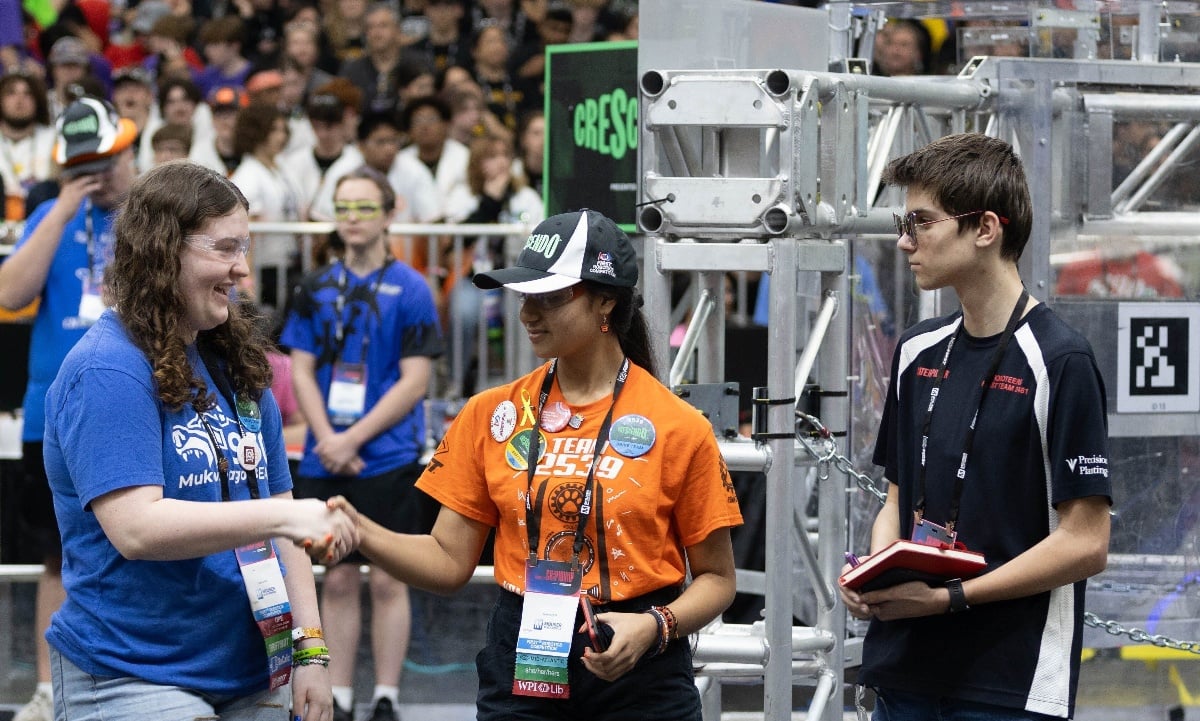Over the past few months, we created task forces to look at a variety of topics. This is the first in a series of blog posts that will provide updates on each task force. We’ll start with the Alliance Selection Timing Task Force. This group looked not only at Alliance Selection timing but also ways to improve the team experience. This group was made up of FIRST® Staff, Program Delivery Partners, and Community Members (team mentors and event volunteers).
In looking at the current Alliance Selection process, FIRST asked the group to keep the time between the end of Qualification Matches and end of Alliance Selection at or under 35-minutes, barring extenuating circumstances. In looking at historical data, Alliance Selection has on average been 30-40 minutes. The group also assessed some additional goals on what we wanted to achieve with a change:
- Provide a consistent Alliance Selection experience across events.
- Empower student representatives to make informed, efficient selections.
- Reduce real and perceived pressure placed on student representatives.
Here is a high-level overview of the changes being implemented for the 2025 season:
- Alliance Selection will begin 8 minutes after scores are posted for the final qualification match
- Each team will be allowed to have up to 3 team representatives, up to 1 representative may be an adult, provided that a team's student representatives outnumber a team’s adult representatives.*
- Alliances will be given 45 seconds to make their pick in round 1, and 90 seconds to make their pick in round 2
- There will be a 2-minute break between picking rounds
- Team reps will come to the emcee who is in a centralized spot on the field to make their pick
- We’re eliminating the shuffling and reintroducing of teams by only bringing out an Alliance Captain when it’s their time to pick
Check out the Alliance Selection Overview for more details about the proposed changes. Please note that specific details in the overview document are subject to change. We are planning to test the proposed changes at the HAVOC off-season event on October 19 and may make tweaks to the final rules based on the testing. We know that other off-seasons may also choose to implement these rules and are excited to see what lessons we learn from all of the trials. The 2025 FIRST® Robotics Competition game manual will have the complete final ruleset.
As with many things we try in FIRST Robotics Competition, this is a pilot. We will be soliciting feedback from teams, volunteers, and Program Delivery Partners after events to understand how this went and what (if any) changes should be made. Please help us by sharing your feedback in the surveys that are sent from FIRST.
Finally, we want to give a big shout out and thank you to our group who was mostly made up of volunteers. We also want to preemptively thank the volunteers who have agreed to help us with implementing this new Alliance Selection model. We have said it before, but we will say it again, FIRST runs on volunteers, and we couldn’t do everything we do without all of you.
*Why allow adults on the field for Alliance Selection? FIRST Robotics Competition is, at its core, a mentor-based program. Allowing mentors to be on the field with the students during what can be a high-stress situation builds in additional ways for coaching and mentorship to happen. This can be especially prevalent while second picks are being made and the Alliance Captain and First Pick collaborate and negotiate about whom to choose. The adult mentor can also be a safety net for the students making the selections. Additionally, many adults are already part of the decision-making process. In the past, communication about picks between an adult and the student on the field would happen via phone or text (or shouting). Putting the mentors with the students making the selection allows the conversations to happen more naturally.
